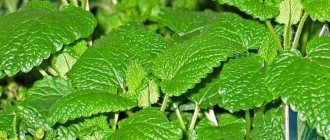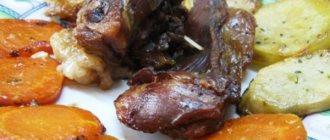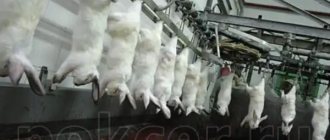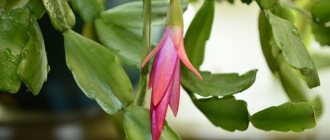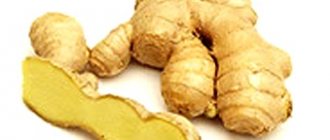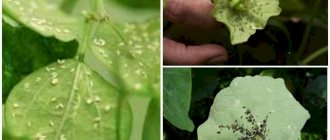Dried fruits in concentrated form contain a large amount of vitamins and microelements necessary for the human body. During the winter, they provide us with the necessary nutrients. Properly made preparations can be used all year round for preparing drinks, baked goods and various desserts. Therefore, it is important to know how to store dried fruits for the winter at home.
What is the benefit
When drying fruits, water evaporates and a small amount of vitamins is destroyed. But all minerals, trace elements, plant fibers, and most vitamins remain. They support the human body in winter, and especially in spring.
Vitamins are one of the most important components of dried fruits. They are preserved almost completely even after exposure to temperature. Dried fruits, even after long-term storage, contain more useful substances than fresh fruits that have been frozen.
The entire harvest harvested at the dacha should not be immediately frozen or canned. It is better to dry or wither some of it to support the body with vitamins in winter.
How to choose a quality product
When purchasing dried fruits, pay special attention to their appearance. Many are misled by the bright color and glossy surface of dried fruits. But their appetizing appearance is not at all an indicator of quality. And the content of useful substances in such a product may even raise doubts.
Many manufacturers treat dried fruits with various substances to give them a marketable appearance. With their help, you can get bright, amber-colored dried apricots and raisins with a shiny, beautiful surface. Which, moreover, have a very pleasant, persistent, unnatural aroma.
To avoid buying a healthy product treated with sulfur and glycerin, you should choose dried fruits with a matte surface. This is an indicator that they are natural. After all, during the drying process, almost all the moisture evaporates, which means there can be no shine.
- Naturally dried dried apricots have a dark shade, sometimes with a grayish coating. And sometimes a not-so-appetizing brown color. But if it is bright, orange, it is the result of exposure to chemical dyes.
- The prunes, which have a brownish tint, were probably in boiling water. This means that it is no longer so useful. A shiny surface is evidence of treatment with wax or glycerin. At best - vegetable oil.
- Real raisins should be brown if they are made from light grape varieties. Dark grapes produce black raisins, sometimes with a bluish tint.
Fruits that have been dried under natural conditions are not very presentable in appearance and have a natural, dull aroma. These dried fruits are truly healthy because they contain vitamins and essential microelements, unlike those that contain a set of preservatives, stabilizers, dyes and flavors.
Choosing a storage location
For cellar owners, the problem is solved very simply: the prepared dried fruits are simply transferred to a cool place and removed from there in small batches as needed.
Owners of city apartments will have a slightly more difficult time, but they will also find a suitable place. Most often it becomes the door or bottom drawers of the refrigerator.
The freezer is not particularly suitable for storing dried products, but in special cases it is also used. At the same time, they try to put dried fruits into separate bags, each of which contains only one portion. Re-freezing is not allowed.
If it is impossible to use a refrigerator, they try to remove containers with dried products away from the kitchen. In such cases, ordinary clothing or even bookcases can serve. By the way, if you arrange the cute jars correctly, you can create a very unusual and absolutely exclusive design with your own hands.
In the kitchen, shelves are used to place dried fruits, as far away from the stove and refrigerator as possible.
Unlike just ripening fruits, their dried counterparts do not like sunlight, so darkened rooms and cabinets closed from light are used for storage.
How to prepare for storage
If any dried fruits have traces of pests, wormholes or rotten areas, such dried fruits are thrown away without regret, as they will cause the destruction of all other fruits.
- Storing dried fruits is possible only when they are completely dried. Remaining moisture will lead to the formation of mold and rotting of dried fruits. But you can’t overdry them either - then they will have a bitter taste.
- According to all the rules, dried fruits and berries lose 75% - 85% of moisture.
- If dried fruits have a higher percentage of moisture than necessary, they are dried first outside (1 day), and then in the oven at +60°C -+75°C for at least 1 hour.
Drying Features
Despite the variety of fruits, they all must undergo the same procedure before drying:
- The fruits are sorted, removing bruised or damaged fruits.
- Future raw materials are thoroughly washed; to get rid of chemicals efficiently, experts advise using a soda solution.
- Fruits prepared in this way are freed from inedible parts and cut into thin pieces. Slices of light fruit are pre-soaked in water with soda or citric acid. To obtain a rich plum color, it is calcined for several minutes at temperatures above 100 degrees.
- It is recommended to dry each variety separately.
When the preliminary work is completed, you can begin the process itself. Since ancient times, apples and pears have been dried in the fresh air and bright sun, covered from flies with a piece of gauze. In this case, unsanitary conditions are observed, which can subsequently lead to diseases.
Today, the ancient method has practically disappeared into oblivion; instead, more progressive methods are used to help cope with the harvest much faster and safer for health. You can preserve fruits using:
- Ovens. Not the most rational approach: the sliced pieces may turn out to be burnt on one side and remain under-dried on the other. This way you can try to dry only apples and pears.
- Batteries. This long and labor-intensive process is more suitable for owners of their own heating boilers. You can also use it during the heating season in ordinary apartments.
- Air fryer. The capacity of the device is slightly smaller than that of an oven, but due to the high temperature, drying will take place much faster. This way you can save apples, pears, apricots, and plums for the winter.
- Microwave ovens. Microwaves cope well with large harvests, but require close attention: if the drying time is exceeded, the fruits may simply burn.
- Electric dryers. The most attractive and safe option for all fruits. Here you can easily and naturally create raisins, dried apricots, prunes, and get dried apples and citrus slices.
When the drying process is completed, they begin an equally important activity: storing dried fruits.
How are dried fruits stored?
Fruits, if they have been dried to the extent necessary for storage, are kept in a glass, tightly closed container.
Fully sealed vacuum lids attached to glass jars are perfect for storing dried fruits. In the absence of air, harmful microorganisms and mold cannot develop.
Storing dried fruits in a vacuum can last for several years.
- For dried fruits with a high content of sucrose and fructose glass , tightly closed containers are best suited. The shelf life of dried fruits, such as prunes, dates, peaches, dried apricots, raisins, etc., with this storage increases significantly: it will be difficult for insects to reach them.
- Bags for storing dried fruits made of thick cotton, pre-soaked in salt water and well dried, are a good way to preserve your harvest. The salt will repel pests, and the fabric will absorb excess moisture, thereby preventing the formation of mold.
- Plastic containers for storing dried fruits , even food grade ones, are not the best solution. It has undesirable effects on the taste of fruits. In plastic containers they can become damp and moldy.
- Storing dried fruits in plastic bags is completely unacceptable - they will begin to deteriorate, and in addition, they will become a home for insects.
Storage conditions for dried fruits
- Those dried fruits that are in a damp, warm, unventilated place are most susceptible to destructive processes. They begin to rot or mold.
- The storage temperature of dried fruits should be within +2°С -+10°С, and air humidity – 65 -75%. In addition, they should not be exposed to light, and the storage location should be well ventilated.
- Blanks in glass containers and canvas bags can be kept in pantries and kitchen cabinets, located as far as possible from bright light, stoves and heating radiators.
Storing dried fruits in the refrigerator is not always suitable due to high humidity. Fruits with a higher degree of moisture (dried apricots, raisins, dates, prunes, dried peaches, etc.) can be kept in the lower part of the refrigerator in an airtight container. In such conditions, dried fruits can be stored for quite a long time. The fruits will retain their elasticity and will be securely hidden from insects.
Rule #5. Check stocks
Storing dried fruits is a process that requires constant monitoring. From time to time, sort through the berries and fruits, noting their safety and appearance. If there are bugs among the supplies, you should bake the dried fruits in the oven. In the summer, you can simply leave the supplies in the sunlight. Raisins, dates and dried apricots can be frozen in the freezer, after which they must be dried again. Only prunes can be stored in the refrigerator for a long time - other fruits will not withstand such conditions. Moldy supplies can only be thrown into the trash.
Frozen storage
With the advent of spacious freezers in our lives, it has become common to keep crops frozen. When frozen, dried fruits lose some of their nutrients, but if there is no other option other than freezing, it is important to know how to store dried fruits in the freezer.
No special preparation is required when storing. Dried fruits are placed in small batches in storage containers (food containers or zip-lock bags) and frozen.
It is important that dried fruits are divided into portions, because repeated freezing of the preparations is unacceptable.
Dried fruits can be stored in this way for several years, provided that they are not defrosted and the temperature in the freezer is at -20°C or lower.
Defrosting should only take place at room temperature. It is best to first place the products from the freezer on the top shelf of the refrigerator, and after a few hours at room temperature. You should not defrost the preparations in hot water or the microwave; the fruits will become tasteless and too soft.
Rule #6. Mint to the rescue
Do you doubt that dried fruits are dried perfectly, or do you simply not have the opportunity to wait long? There is a way to preserve berries and fruits at home for a long time. To do this, add dry mint to the preparations and pack everything in a canvas bag. Such supplies should be stored in a dark closet without additional light sources.
We recommend: How to properly store fresh figs so that they do not spoil ahead of time?
Shelf life (table)
The shelf life of dried fruits and dried berries at different temperatures and humidity of 65-75% is presented in the table below.
| Dried fruit | Shelf life (months) at temperature | ||
| 2-10°С | 10-17°C | 18-24°C | |
| Raisin | 18 | 12 | 6 |
| Dried apricots | 12 | 6 | 3 |
| Apples/pears | 18 | 12 | 6 |
| Bananas/figs/dates | 10 | 6 | 3 |
| Cranberry/cherry | 18 | 12 | 10 |
| Rose hip | 36 | 18 | 12 |
How to prevent mold from appearing
The fight against mold involves regular (at least 2 times a month) inspection of the fruits in order to identify those on which characteristic spots have begun to appear.
Moldy fruits or berries should be thrown away immediately, and those that were next to them should be put into compote (after rinsing well beforehand).
To ensure that the moisture is evenly distributed throughout the dryer, it needs to be stirred more often.
In the place where the dried fruits are located, you need to keep an open container with soda, salt or ash: they will absorb moisture. But these absorbents will need to be replaced with fresh ones at least twice a month.
Some simple tips
To better preserve the fruits, you should use some fairly easy life hacks from experienced housewives:
- Salt or mint will help ensure the absence of moisture. Dried leaves are added directly to the packaging with dried fruits, and an open salt shaker is placed close to the location of the packaged products. In this case, you won’t have to think about how to process dried apricots for long-term storage.
- Inventory will have to be checked periodically. But don’t panic and throw away the harvested crops if bugs suddenly appear in them. In this case, processing the reserves in the oven or dryer will help. Emergency freezing of dried fruits at a temperature no higher than -15 degrees would also be a good option. In this case, subsequent additional drying will still be required. To prevent re-infection, it is necessary to treat the container and shelf with acetic acid. This will help destroy insect larvae. If the pests have managed to actively multiply, then there is only one way out: immediate destruction of supplies.
- Regular ventilation will also be important. For closed containers, it is recommended to do this once a week, and it is advisable to completely empty the supplies and ventilate them completely.
Simple helpers
To preserve the dried harvest, simple helpers will come in handy, which are sure to be found in every home. In addition to the rather exotic mint, which protects against mold and insects, they will include:
- Vinegar. You can use it for washing bags, wiping boxes, and washing shelves. The not-so-pleasant smell evaporates quite quickly.
- Laundry soap. This fragrant product will reliably repel insects and prevent the appearance of fungus. True, it is not recommended to leave it next to open containers: dried fruits in cloth and paper packaging will quickly absorb a pungent odor, which you will no longer be able to get rid of.
Before purchasing a product on retail shelves or in stores, you should carefully inspect it for insects and debris. For a beautiful appearance, suppliers wipe their goods and treat dried fruits for long-term storage with various chemical compounds. To avoid the entry of such substances into the body, dry fruit can be stored at home using traditional and proven methods.
Rate this post
